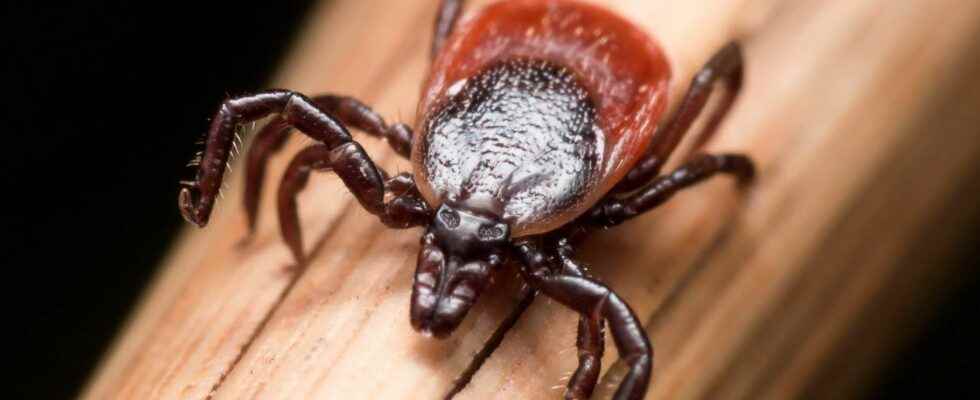Walkers and other nature lovers can sometimes come back from their walk with a tick bite, an animal that can transmit serious diseases. What to do in this case? How to react ? Here are the steps to follow.
You will also be interested
A tick bite is never trivial. This mite feeds on the blood of mammals such as dogs for example. In humans, it is associated with several serious diseases such as tick-borne meningoencephalitis (MET) and Lyme disease.
What to do in case of a tick bite?
If you are bitten by a tick, here is what to do:
- Remove the tick, taking care to remove the head or more exactly the rostrum, that is to say the part that perforates the skin, at the same time as the body. Use a tick remover (available in pharmacies) for this rather than tweezers.
- Then disinfect the wound.
- In the following days, monitor your skin regularly. In case of redness, itch or of symptoms evoking a state of flu or a state of fatigue, consult immediately.
Prevention: avoid tick bites
In addition, in prevention, before a walk in the forest, put on high, closed shoes and well-covering clothing to avoid tick bites.
Is a tick bite dangerous?
If there is a bite, the animal can transmit serious diseases:
- Lyme disease can in particular cause neurological, cardiac and articular disorders;
- the meningoencephalitis mites (MET) affects the brain.
One vaccine exists well againstencephalitis to ticks but the High Council of Public Health (HCSP) recommends it only to “travellers staying in endemic rural or forest areas in central, eastern and northern Europe, from spring to autumn”.
Interested in what you just read?
